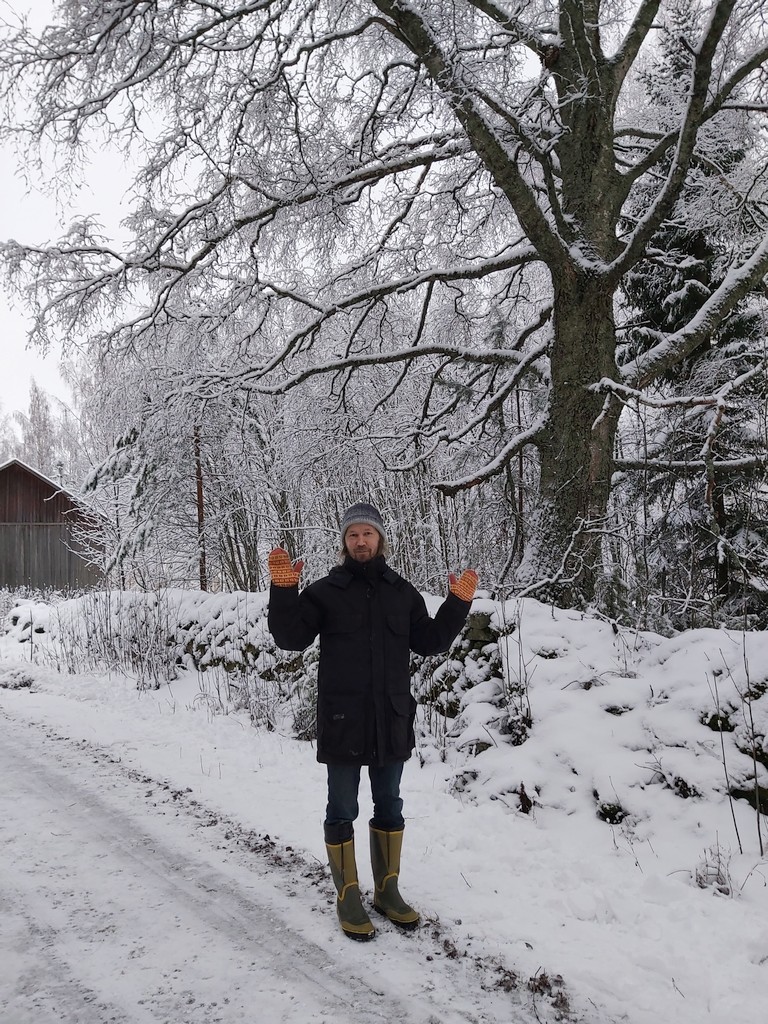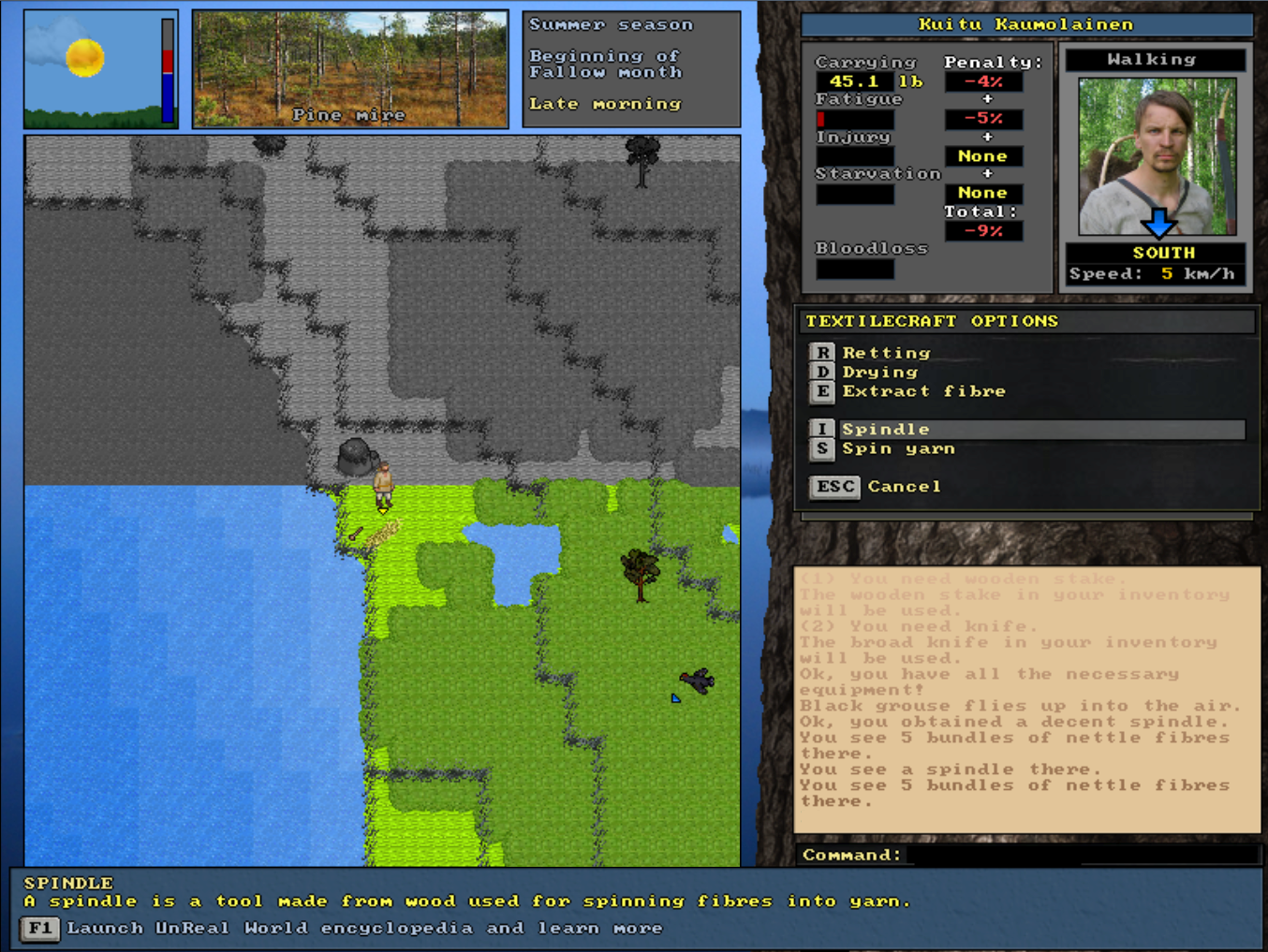See likes given/taken
| Post info | No. of Likes |
|---|---|
|
Re: Salt as seasoning
From what I've read, salt was actually used more sparingly in this era and predominantly as a preservative due to how expensive it was to obtain without modern mass production methods. Sour flavors from various fermentation methods (also used to preserve foods) were more common than salty flavored foods. At current food cooking ratios, even 0.1 lb of salt added to a recipe would be a huge amount! December 29, 2020, 03:57:12 AM |
1 |
Re: Salt as seasoning
Because... why not? Salt is one of the most basic seasoning, and people of URW eat their food quite bland. Back then the salt was used foremostly for preservation. The food was seasoned with herbs instead. It’s far later habit to add salt to everything as seasoning. December 29, 2020, 06:35:10 PM |
1 |
|
Happy New Year
Sometimes I'm a bit off and not too precise about the exact timing, but better late than newer - so ... Happy New year to all of you!  There's not that much snow this year compared to the past average, but it's winter nevertheless. And a new year ahead of us. Take care! January 02, 2021, 05:30:59 PM |
1 |
|
'Asentokuusi' - simple shelter under a leaning spruce tree
A few essential wilderness accommodation options for rough wanderers are coming up. 'Asentokuusi' (can be freely translated as "post spruce") was the simplest form of shelter for resting and spending a night protected from the elements - and in the next patch we'll be featuring a possibility to set up a 'post spruce'. Post spruce is made simply by felling a young spruce to lean against another spruce tree. Some of the lowest twigs are removed to create space, and these are then laid on the ground for some insulation and cushion. Simple as that. This was the usual method of spending a night in the wilderness condition when more permanent camp wasn't necessary. Setting up a post spruce will found in "Building options", and it does felling the tree and covering the ground with twigs all together. Tools needed for the process are the same as for felling young trees in general. With this addition we'll also feature general usage of spruce twigs as ground cover for insulation. If there are no furs to cover yourself into sleeping on spruce twigs, instead of bare ground, now keeps you a bit more warm during cold nights. These are future additions, not yet functional in current version 3.63. March 12, 2021, 06:39:15 PM |
1 |
|
A very draft of textilecraft -- fibre processing on its' way
So we're adding fibre processing, from harvested plants into yarn, starting with nettles. It's a complex feat(ure) all-in-all and the things briefed here can change as we proceed. Now we're in the middle of brainstorming, study, coding and testing the initial mechanics - and also making changes to existing stuff to the extent that allows this type of new material processing in the first place. Starting with nettles we'll add few new habitats (ponds and wetlands) for them so that the newly featued usefulness will be practical in the wilderness conditions. Nettle harvesting also needs to be changed so that they can be harvested way earlier than currently, without seeds naturally, but in good length for fibre extracting. Fibres obtained will be probably categorized as PLANT item type, for easier spotting and selection from the inventory. For all the fibre processing and spinning yarn it's likely that we'll feature a completely new skill: textilecraft. The fibre processing in general will go through retting, drying and extracting fibres. We'd like to feature water retting based on the temperature, so it can be faster or slower depending on the weather (ie. water temperature), and becoming impossible in the freezing weather. We'd also like to make it possible to extract fibres from (fresh) nettles simply by hand without retting process required. It takes some time, but that's how you would craft a fishing line in the wilderness within few hours. For producing larger quantities of fibres the water retting would be the way to go, of course. Fibres can be spun into yarn either by hand, or with a spindle. The both options will be available. Crafting a spindle is simple, but the actual spinning is something you need to practise. Textilecraft skill would come in handy there, as the beginners surely don't produce yarn all that fast at all. That's some of the to-dos (and actually some dones also) from top of my head to come up with satisfying fibre processing. With this addition I found it better to proceed kind of backwards... So at first I've got some (magically generated) nettle fibre, and a spindle - a new craftable item. Textilecraft menu is set up with the initial options. Retting, drying and extracting are mere placeholders, but spinning yarn is being coded now. Productions times and yield and internal properties of the bundles of fibre, and yarns are on the table. After the spinning code is ready, it's time to concentrate on the preceeding steps. Here's a very draft screenshot where I'll try to code Kuitu Kaumolainen through spinning his first nettle yarn. There's bundle of nettle fibres and spindle on the ground.  These are future additions - not yet functional in current version 3.63. March 17, 2021, 11:04:37 AM |
1 |
|
Fibre processing done
So, the system of processing fibres from hemp and nettle into yarn is now all coded. Small adjustments remain, but we've happily accomplished mechanics for all the work phases and necessary adjustment to data structures. Adding this system of textilecraft has been likely the most laborous single feature to code in the upcoming version. With several other features regarding tying equipment we can talk about sort of cordage overhaul. Soon enough I'll be posting more organized entry about the whole system with screenshots, but now let's quickly cover what hasn't been covered in the earlier textilecraft news. So, the final two additions to textilecraft system were drying the retted plants and the actual extracting of fibre. Drying is simplified. It takes about a week for retted plants to dry before extracting the fibre can be proceeded. And you can basically set them drying anywhere. The idea of extracting the fibres is to break the dried retted stalks so that the woody core shatters and falls away leaving the loose fibres free. Traditionally this was done with a special device called ‘loukku’, but in the game we use more primitive method of beating the stalks for example with a club on a solid working surface. The requirements are similar to softening hides as a last step of tanning; beater and a working surface. Extracting fibres is hard physical work and commonly carried out with several people working together. If you have companions around they will help you with the task. After the breaking phase, obtained bundles of fibre are scraped free from remaining coarse parts and extraneous material. This is done in steps, first removing the biggest extraneous parts and gradually proceeding towards the finer ones. Traditionally special tools, combs and brushes were used to clean the bundles of fibre as effectively as possible. In more primitive fashion it can be also done by whisking, rubbing and whacking the bundles against a hard surface, or with tools at hand. In the game this is the method used, and the equipment available for breaking is applied here as well. All these required phases are done with single textilecraft option. Extracted fibres are obtained in small bundles, eg. "bundle of hemp fibre". These items are categorized as PLANT type in character's inventory. As mentioned before, nettle fibres can be also extracted directly from the stalk by hand even without retting. Although it's slower to mass produce fibre that way it can be useful option when only a small amount of fibre is needed. To do it, simply use extract option directly to freshly harvested nettles. The nettle stem is crushed by hand, and the fibres carefully stripped off. Character's expertise in textilecraft affects to required working time and amount of usable fibre extracted. So as your mastery in textilecraft increases you can expect to get higher fibre yield in shorter time. These are future additions - not yet functional in current version 3.63. May 06, 2021, 04:19:40 PM |
1 |
|
Groundworking and levelling terrain for building
It seems the most efficient place to build a cabin is right by the shore of a river, lake or sea tile. This is not very realistic, as if you build too close to the water you would be sure to flood at some time. I would suggest that to discourage this, a contiguous wooden building should only be possible on a flat bit of land, which is usually found a little uphill from the shoreline. What would be great though is if we could do groundwork - that is raise or lower the level of terrain with a shovel and about maybe eight times the effort needed to dig a pit. Even better would be if raising or lowering the level of one tile forced you to correspondingly lower or raise an adjacent tile - all that earth has to go somewhere or come from somewhere, after all. Building right by the shore should still be possible, but this would make it a lot more work to simulate making some rudimentary flood defences with the moved earth. A small hunting cabin should usually be unaffected by this, which is good - but I think a larger house needs to be made more challenging to build. Groundwork can do this! October 14, 2021, 01:33:53 AM |
1 |
|
Losing Braincells While Trying to Find Camouflaged Reindeer
Recently I was feeling confident ingame after a few successful hunts and quests so I accepted the "Animal in Forest Cover" quest. You probably already know where this is going. I spent 2-3hrs irl searching in a spruce mire, aimlessly wandering trying to find the tracks of the demon stag. Long story short I've just quit the game and registered this account, specifically to ask why this godforsaken quest is in the game, if not to burn the image of thousands of spruce trees into my retina. P.S please for the love of people's sanity significantly decrease the search circle if you read this Sami. December 02, 2021, 02:02:36 AM |
1 |
|
Re: How to get Warflail?
This was a recent discussion on the URW discord. AFAIK version: 3.10 released: 22-Apr-2008 - warflail have been completely removed because they actually belong to an entirely different historic era. However, a character created in v 3.20 (I think is right) can get one and then migrate to 3.30 and then to 3.7 current version. I did recently to verify for the afore mentioned discussion. May 26, 2022, 01:12:18 AM |
1 |
|
Re: Technical question related to Agriculture
1. Not too big as is 9x14=126 tiles, x10 for 1260 possible stacks. BUT! If you have fences, traps shelter, you’re going to get nagged. 2. Yes. The game loads wilderness/zoomed out map and all 8 surrounding tiles. You’re going to hit item/stack limit. You should leave two zoomed out tiles between farm and cabin. So farm is at least 3rd wilderness tile away. 3. I don’t recall seeing that in release notes. November 19, 2022, 12:10:12 AM |
1 |


